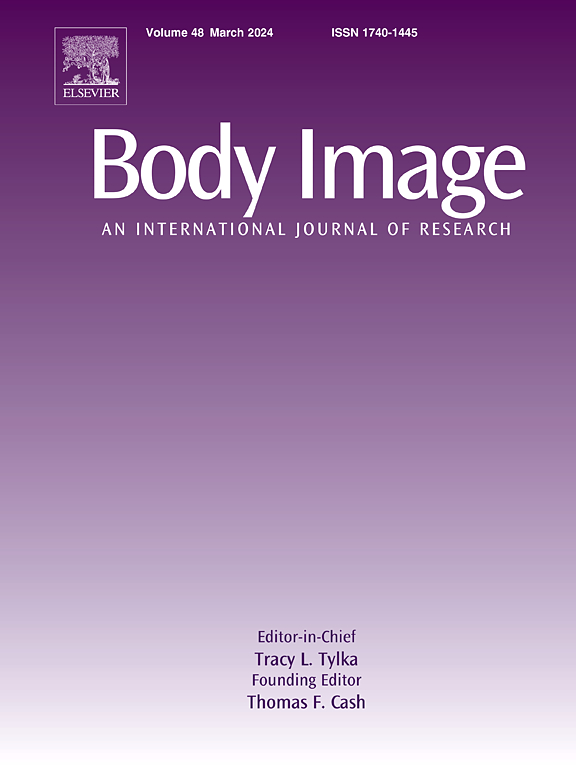Exploring muscularity concerns and behaviours among boys and men with probable eating disorders
IF 5.4
1区 心理学
Q1 PSYCHIATRY
引用次数: 0
Abstract
The muscular body ideal and muscularity concerns and behaviors have been posited to be major drivers of eating disorder psychopathology among boys and men. However, there is limited evidence of this, particularly among large, international samples. This study aimed to compare muscularity concerns and behaviors across probable eating disorder diagnoses among a non-clinical sample of boys and men from Canada and the United States. Data from the Study of Boys and Men (N = 937) were analyzed. One-way ANOVAs and post-hoc Tukey’s honestly significant difference tests were used to determine differences in mean scores on two commonly used measures of muscularity concerns and behaviors. Participants with probable anorexia nervosa/atypical anorexia nervosa and probable bulimia nervosa had significantly greater muscularity concerns and behaviors compared to those with neither condition. However, muscularity concerns and behaviors were similar across these two disorders. Participants with probable binge-eating disorder had significantly lower muscularity concerns and behaviors compared to those with probable anorexia nervosa/atypical anorexia nervosa and probable bulimia nervosa. Findings underscore the relevance of muscularity concerns and behaviors among boys and men with eating disorders, particularly anorexia nervosa/atypical anorexia nervosa and bulimia nervosa. Future iterations of the diagnostic criterion for these disorders should consider adding a focus on muscularity concerns and behaviors to account for the experiences of boys and men.
探讨可能患有饮食失调的男孩和男性的肌肉问题和行为
肌肉的身体理想和肌肉的关注和行为被认为是男孩和男人饮食失调精神病理的主要驱动因素。然而,这方面的证据有限,特别是在大型国际样本中。这项研究旨在比较来自加拿大和美国的非临床男孩和男性在可能的饮食失调诊断中对肌肉的关注和行为。对来自男孩和男人研究(N = 937)的数据进行分析。使用单因素方差分析和事后Tukey 's诚实显著性差异检验来确定两种常用的肌肉关注和行为测量的平均得分的差异。可能的神经性厌食症/非典型神经性厌食症和可能的神经性贪食症的参与者与没有任何情况的参与者相比,有更大的肌肉问题和行为。然而,这两种疾病对肌肉的关注和行为是相似的。与可能患有神经性厌食症/非典型神经性厌食症和神经性贪食症的参与者相比,可能患有暴饮暴食症的参与者对肌肉的关注和行为显著降低。研究结果强调了男孩和患有饮食失调的男性,特别是神经性厌食症/非典型神经性厌食症和神经性贪食症的肌肉问题和行为的相关性。这些疾病的诊断标准的未来迭代应该考虑增加对肌肉问题和行为的关注,以解释男孩和男人的经历。
本文章由计算机程序翻译,如有差异,请以英文原文为准。
求助全文
约1分钟内获得全文
求助全文
来源期刊

Body Image
Multiple-
CiteScore
8.70
自引率
28.80%
发文量
174
期刊介绍:
Body Image is an international, peer-reviewed journal that publishes high-quality, scientific articles on body image and human physical appearance. Body Image is a multi-faceted concept that refers to persons perceptions and attitudes about their own body, particularly but not exclusively its appearance. The journal invites contributions from a broad range of disciplines-psychological science, other social and behavioral sciences, and medical and health sciences. The journal publishes original research articles, brief research reports, theoretical and review papers, and science-based practitioner reports of interest. Dissertation abstracts are also published online, and the journal gives an annual award for the best doctoral dissertation in this field.
 求助内容:
求助内容: 应助结果提醒方式:
应助结果提醒方式:


